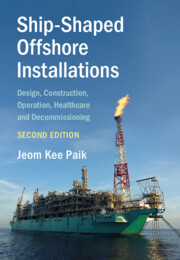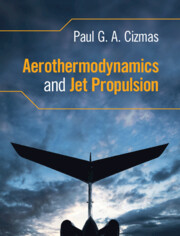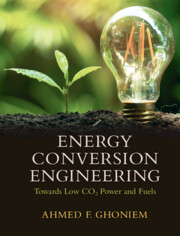Refine search
Actions for selected content:
5455 results in Thermal-fluids engineering
Appendix 1 - Glossary of Maritime Engineering Terms
-
- Book:
- Ship-Shaped Offshore Installations
- Published online:
- 27 January 2022
- Print publication:
- 17 February 2022, pp 488-502
-
- Chapter
- Export citation
Preface to the Second Edition
-
- Book:
- Ship-Shaped Offshore Installations
- Published online:
- 27 January 2022
- Print publication:
- 17 February 2022, pp xv-xvi
-
- Chapter
- Export citation
Preface to the First Edition
-
- Book:
- Ship-Shaped Offshore Installations
- Published online:
- 27 January 2022
- Print publication:
- 17 February 2022, pp xvii-xx
-
- Chapter
- Export citation
13 - Quantitative Risk Assessment and Management
-
- Book:
- Ship-Shaped Offshore Installations
- Published online:
- 27 January 2022
- Print publication:
- 17 February 2022, pp 374-399
-
- Chapter
- Export citation
6 - Fatigue Limit States
-
- Book:
- Ship-Shaped Offshore Installations
- Published online:
- 27 January 2022
- Print publication:
- 17 February 2022, pp 183-214
-
- Chapter
- Export citation
12 - Aircraft Impact Engineering
-
- Book:
- Ship-Shaped Offshore Installations
- Published online:
- 27 January 2022
- Print publication:
- 17 February 2022, pp 347-373
-
- Chapter
- Export citation
14 - Life-Cycle Corrosion Assessment and Management
-
- Book:
- Ship-Shaped Offshore Installations
- Published online:
- 27 January 2022
- Print publication:
- 17 February 2022, pp 400-444
-
- Chapter
- Export citation
Appendix 4 - Inverse First-Order Reliability Method for Drawing Extreme Wave Contours
-
- Book:
- Ship-Shaped Offshore Installations
- Published online:
- 27 January 2022
- Print publication:
- 17 February 2022, pp 509-513
-
- Chapter
- Export citation
Appendix 6 - Source Listing of the FORTRAN Computer Program USAS-S
-
- Book:
- Ship-Shaped Offshore Installations
- Published online:
- 27 January 2022
- Print publication:
- 17 February 2022, pp 530-543
-
- Chapter
- Export citation
4 - Site-Specific Wave-Induced Hull Girder Loads
-
- Book:
- Ship-Shaped Offshore Installations
- Published online:
- 27 January 2022
- Print publication:
- 17 February 2022, pp 111-161
-
- Chapter
- Export citation
Appendix 2 - Scale Definitions of Wind, Waves and Swells
-
- Book:
- Ship-Shaped Offshore Installations
- Published online:
- 27 January 2022
- Print publication:
- 17 February 2022, pp 503-504
-
- Chapter
- Export citation
15 - Lifetime Healthcare and Safe Decommissioning
-
- Book:
- Ship-Shaped Offshore Installations
- Published online:
- 27 January 2022
- Print publication:
- 17 February 2022, pp 445-487
-
- Chapter
- Export citation
10 - Sloshing Impact Engineering
-
- Book:
- Ship-Shaped Offshore Installations
- Published online:
- 27 January 2022
- Print publication:
- 17 February 2022, pp 303-326
-
- Chapter
- Export citation

Ship-Shaped Offshore Installations
- Design, Construction, Operation, Healthcare and Decommissioning
-
- Published online:
- 27 January 2022
- Print publication:
- 17 February 2022

Aerothermodynamics and Jet Propulsion
-
- Published online:
- 14 January 2022
- Print publication:
- 02 December 2021
-
- Textbook
- Export citation

Energy Conversion Engineering
- Towards Low CO2 Power and Fuels
-
- Published online:
- 13 January 2022
- Print publication:
- 11 November 2021
-
- Textbook
- Export citation
1 - Introduction
-
-
- Book:
- Advanced Turbulent Combustion Physics and Applications
- Published online:
- 09 December 2021
- Print publication:
- 06 January 2022, pp 1-24
-
- Chapter
- Export citation
10 - Challenges in Practical Combustion
-
- Book:
- Advanced Turbulent Combustion Physics and Applications
- Published online:
- 09 December 2021
- Print publication:
- 06 January 2022, pp 396-459
-
- Chapter
- Export citation
2 - Turbulent Flame Structure and Dynamics: Combustion Regimes
-
-
- Book:
- Advanced Turbulent Combustion Physics and Applications
- Published online:
- 09 December 2021
- Print publication:
- 06 January 2022, pp 25-99
-
- Chapter
- Export citation
7 - Supersonic Combustion
-
-
- Book:
- Advanced Turbulent Combustion Physics and Applications
- Published online:
- 09 December 2021
- Print publication:
- 06 January 2022, pp 281-327
-
- Chapter
- Export citation
